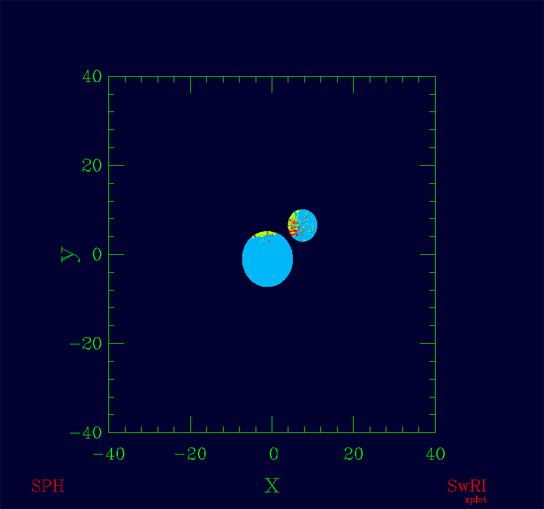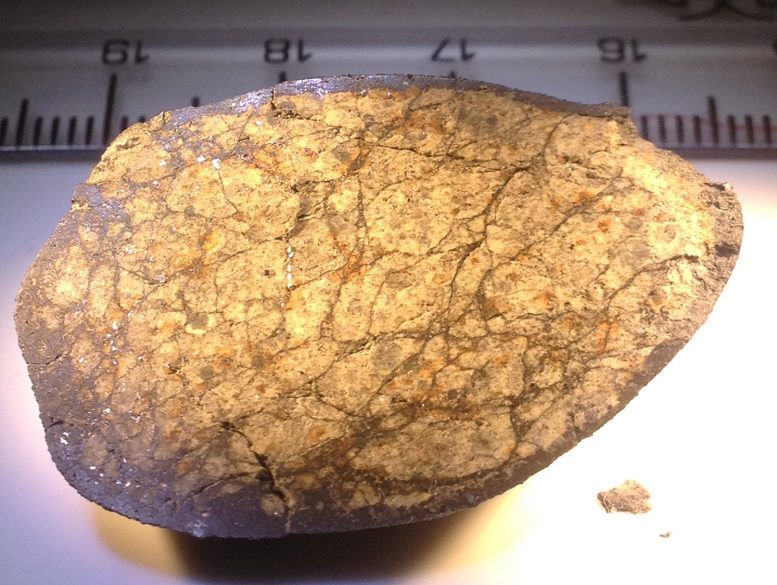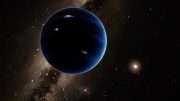
NASA-funded researchers confirm that fragments from the moon-forming giant impact struck main belt asteroids, leaving a permanent record of the event. High-velocity collisions with main belt asteroids heated the surface, as evidenced by ancient impact heat signatures in stony meteorites. Credit: Robin Canup/Southwest Research Institute; Qingzhu Yin, Univ. California-Davis
A newly published study uses the impact heat signatures in meteorites to date the Moon-forming impact between a large protoplanet and proto-Earth.
The inner Solar System’s biggest known collision was the moon-forming giant impact between a large protoplanet and the proto-Earth. Kilometer-sized fragments from this impact hit main belt asteroids at much higher velocities than typical main belt collisions, heating the surface and leaving behind a permanent record of the impact event. A team of NASA funded researchers modeled the evolution of giant impact debris and analyzed these ancient impact heat signatures in stony meteorites to conclude that pieces of the Giant Impact did indeed strike the asteroid belt. The team’s work appears in the April 2015 issue of the journal Science.
The team was led by Principal Investigator Bill Bottke, of the Institute for the Science of Exploring Targets team at the Southwest Research Institute, a U.S. team member of NASA’s Solar System Exploration Research Virtual Institute (SSERVI), which fosters research on Solar System science and exploration at NASA’s Ames Research Center in Moffett Field, California.
SSERVI Director Yvonne Pendleton, notes “This is an excellent example of the power of multidisciplinary science. By linking studies of the moon, of main belt asteroids, and of meteorites that fall to Earth, we gain a better understanding of the earliest history of our Solar System.”

Chelyabinsk meteorite. This specimen shows a highly developed network of thin impact melt veins (dark lines) and impact melt pockets (dark areas). The dark material around the outside of the meteorite is not impact melt, but fusion crust created during atmospheric entry; the presence of fusion crust indicates this stone broke away from the main mass during entry. Shiny metallic grains are readily visible.
High-velocity impacts leave impressive fingerprints. They do more than make craters, they break up, mix, heat, and melt rock, leaving telltale signs of heat-shock that are visible in an optical microscope. Impact signatures allow researchers to gain insights into the last stages of planet formation and deduce the earliest bombardment history of ancient bodies like Vesta, one of the targets of NASA’s Dawn mission and a main belt asteroid whose fragments were delivered to Earth in the form of meteorites. It is possible that tiny remnants of the moon-forming impactor or proto-Earth might be found within meteorites that show signs of heat-shock from giant impact debris. This would allow scientists to directly measure, for the first time, the unknown primordial nature of our home planet.
By modeling the evolution of giant impact debris over time, and fitting the results to ancient impact heat signatures in stony meteorites, the team was able to infer the moon formed approximately 4.47 billion years ago, in agreement with many previous estimates. The most ancient Solar System materials found in meteorites are about one hundred million years older.
“The importance of giant impact ejecta returning to strike the moon could also play an intriguing role in the earliest phase of lunar bombardment,” said Bottke. “This research is helping to refine our time scales for ‘what happened when’ on other worlds in the Solar System.”
Co-author Timothy Swindle, director of the University of Arizona’s Lunar and Planetary Laboratory, said: “It was Bill Bottke’s idea to look at the asteroid belt to see what effect a moon-forming giant impact might have had, after expecting a lot of collisions in the period shortly afterwards. We determined the ages of impact events that affected meteorites in laboratory analysis and found that our data matched his predictions. It’s a great example of taking advantage of groups that work in two different specialties – orbital dynamics and chronology – and combining their expertise.”
SSERVI is funded by the Science Mission Directorate and Human Exploration and Operations Mission Directorate at NASA Headquarters.
Reference: W. F. Bottke, et al., “Dating the Moon-forming impact event with asteroidal meteorites” by W. F. Bottke, D. Vokrouhlický, S. Marchi, T. Swindle, E. R. D. Scott, J. R. Weirich and H. Levison, 17 April 2015, Science.
DOI: 10.1126/science.aaa0602









i have a big colletion mateorites
I believe I have found a meteorite evidence of moon forming impact it’s mostly meteoritic iron with highly shocked lunar silicic polymorph embedded within pockets through out the iron could be defined as a pallette but instead of abundance of olivine crystals which it does contain but there’s mainly the lunar silicic material overall if interested I can send quality images to who ever is interested just send me an email or better yet text my phone or call [email protected] (510)377-3311 .